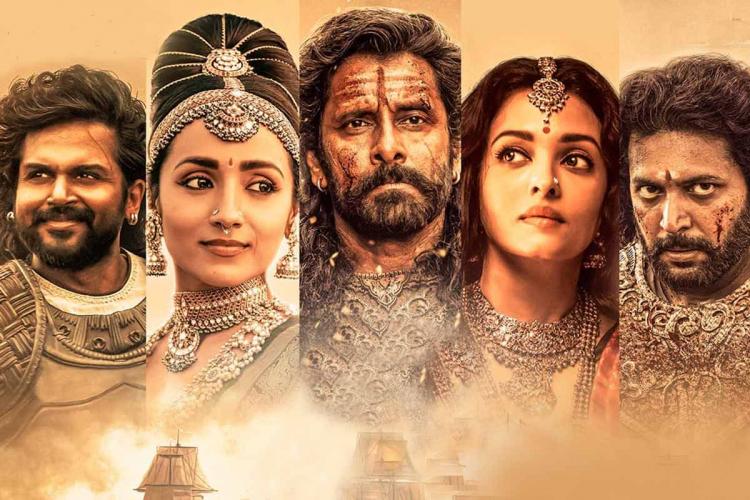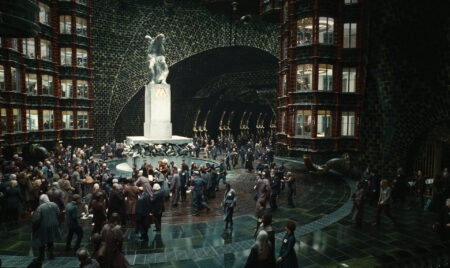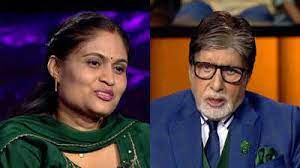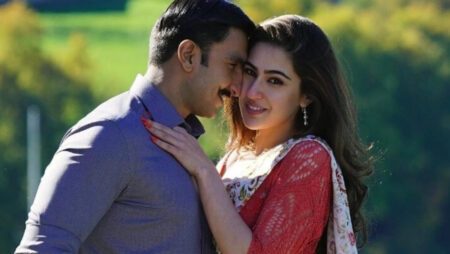The recently released movie and much-awaited Ponniyin Selvan is doing wonders at the box office, shattering records. The movie which has been in creation for almost a decade was finally released the previous week. Ponniyin Selvan, a literary masterpiece by Kalki Krishnamurthy, has been in the works for at least a few decades before Mani Ratnam decided to adapt it for the big screen. The expansive historical fiction work by Krishnamurthy, which was released in five volumes in 1955, is based on actual people and occasions from the eleventh century.
Outside the Chola palace, Princess Kundavai (Trisha) and Queen Nandini (Aishwarya Rai Bachchan) cautiously approach one another, each trying to outsmart the other while feigning affection. The two rulers, adorned in gold and glory, are encircled by hordes of their people. The other is hungry for vengeance, while the former seeks to rescue her kingdom and carry on her family’s benevolent rule. In a magnificent film where powerful male warriors play checkers for dominance and the females are playing chess. And this exquisitely produced sequence in Ponniyin Selvan: I stand out the most, where we witness the battle of brains.
Despite the ongoing discussion and advocacy from critics for improving the portrayal of women in Indian films, very little of this is reflected on the screen, especially in the regional tentpoles where “Rebels,” “Stylish,” and “Icon Stars” predominate. When an ensemble cast historical drama on the Chola dynasty, a thalassocratic state in Southern India, is announced, little is expected of women. The movies are undoubtedly awaited for their grandeur, and the immenseness of the flicks is furthered by the stunning women who wear gold jewelry. Beyond that, however, character discernment is constrained. Give Mani Ratnam the task, though, and the scene is different.
Ponniyin Selvan I, a movie directed by Mani Ratnam, is dominated by women. The struggle of the entire movie is centered on the political minds of Nandini (Aishwarya Rai Bachchan) and Kundavai (Trisha). The only purpose of these figures is not to depict the ambiance of the tenth century or the appearance of princesses in that period. Grey women characters with a grudge against the Chola monarchy are also present. And that is the beauty of the whole book as well as the movie.
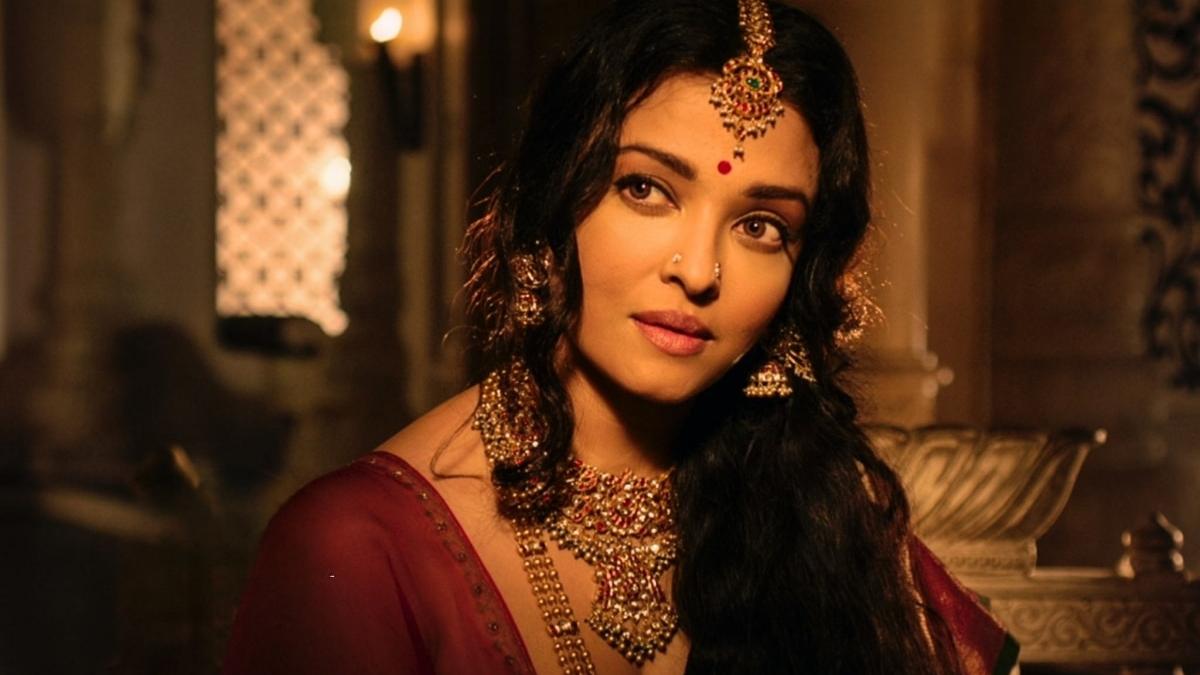
Kundavai is shown as Samrat Chola’s smartest child, but Nandini will do everything to get her way. Although her brothers may be excellent fighters, she has a sharp political mind. When her father Samrat becomes ill and the kingdom is threatened, Kundavai mobilizes people, puts plans into action, and works to maintain the unity of her brothers Aditha Karikalan (Vikram) and Arulmozhi Varman (Jayam Ravi).
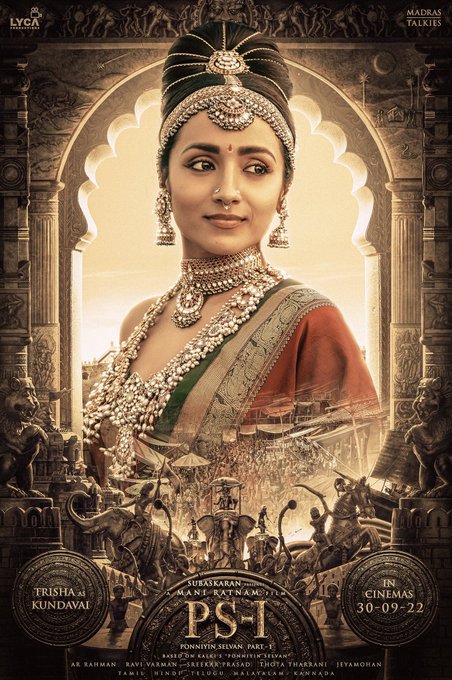
Poonguzhali, also known as Samuthirakumari (Aishwarya Lekshmi), is shown as a woman who works on the boat and shuttles passengers. She is another powerful character. She is perceptive enough to identify the adversary and defend her monarch, for whom she also has a secret affection. In the final scene of the first movie, Poonguzhali remains with Arulmozhi—something we seldom ever see female characters do in mainstream movies.
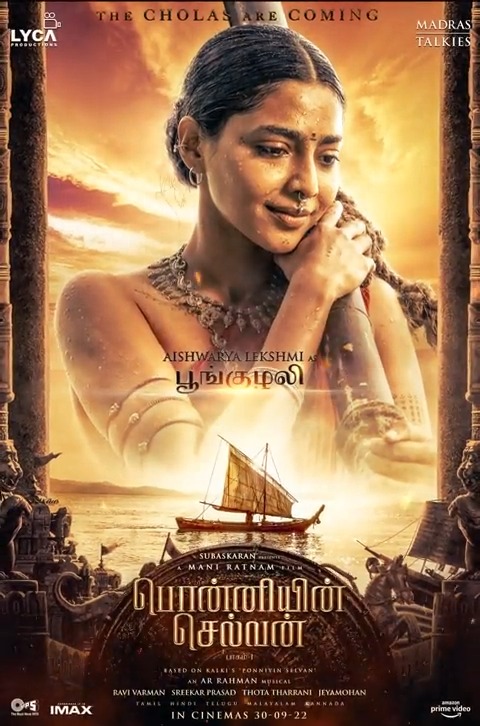
The director is renowned for having female characters drive the plot in his movies. The audience was enthralled by Mani Ratnam’s films like Mouna Raagam, Bombay, and Roja, among many others, that broke from the norm in how women are portrayed. And in Ponniyin Selvan, he brought them back to center stage and let them play politics, this time in the present rather than in the past.
It’s fantastic how women in this story either possess or discover a means to display their power. These women were created by the artist Mani Ratnam. Despite the splendor, Nandini, Kundavai, and Vannathi must endure, Aishwarya, Trisha, and Sobhita often equal and even surpass Vikram, Karthi, and Jayam Ravi’s portrayals of powerful monarchs and warriors. They are kingdom brains who engage in political maneuvering behind the courtroom’s curtains, and occasionally right in the middle of it.
Without a doubt, “Ponniyin Selvan” is among the greatest books I’ve ever read with regard to the nuanced portrayal of female characters. There are several female characters in this classic that will stick with you for a long time.
These ladies are described as being not only graceful but also defying all societal norms.
Anyone’s interest may be maintained just by the variety in how these complicated personalities are handled. These powerful women have a reason for existing, as well as their own interests and objectives. Political intrigue, retribution, romance, sensual desire, sacrifice, and love are all there in this riveting classic.
Both the powerful Ponniyin Selvar and our story’s protagonist Vanthiyathevan perform their roles under the direction and control of these formidable ladies. In a powerful yet subtle way, Kalki illustrates this. The characters in this timeless classic, whether they are male or female, transport you to a new planet and a different time period where you sail with them.
If their intelligence and grace don’t create an impact, they’re definitely being underestimated, as most people have been throughout history.
Read more: The Ponniyin Selvan – Mani Ratnam’s ultimate dream movie!!







